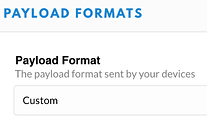Hello,
I am experiencing a strange issue. I have a Libelium Smart Agriculture sending every 2 minutes its payload to a registered Kerlink Wirnet Station gateway on TTN. It has been sending data without any problems for the last 5 months! It’s been registered to send data via OTAA.
Today, I tried to add the Collos integration to the TTN application and after that I observed that I couldn’t see any data flow on the console. I reset the frames counter just to check if this is the problem. For a period of 30 minutes there was no gateway traffic too (monitor the gateway via console). After this period my device was again shown in the gateway traffic with the same Device Address as before. Until now, my device is sending data to the gateway but for some reason they are not forwarded to the application console.
Notes:
- The device and gateway are located somewhere far away from me (around 40km). None of them has been restarted or reprogrammed.
- The OTAA credentials have not changed and the device address remains the same as before.
- First, I tried to reset the frame counter. Then, I removed the Collos integration.
- In the gateway traffic there is no “drop” message in the trace section of the device. Everything seems to be normal!
I don’t know if the Collos integration add was just a coincidence. Because it does not make any sense to me that this could mess things up since is just an API call after the app server receives the data.
Can anyone suggest how to debug this situation without having to restart my device which is really far away? Is it a TTN backend issue?
Thank you very much!
 Moderator note: this topic’s title has been changed for future reference, after the cause of the problems was determined in one of the subsequent responses.
Moderator note: this topic’s title has been changed for future reference, after the cause of the problems was determined in one of the subsequent responses.


